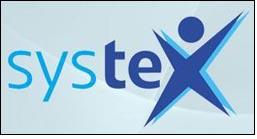 The Vision paper for smart textiles sector in Europe is developed in order to identify the various challenges and barriers faced by smart textiles stakeholders during the commercialization of smart textiles products.
The Vision paper for smart textiles sector in Europe is developed in order to identify the various challenges and barriers faced by smart textiles stakeholders during the commercialization of smart textiles products.This vision paper is also developed to identify the strengths, weaknesses, opportunities and threats faced by the European smart textiles sector and aids in developing strategies which can help the stakeholders of the sector in the commercialization of smart textiles.
According to the definition of CEN/TC 248 Committee working on standardization, Smart or intelligent textiles are functional textiles, which interact with their environment by responding to it. This response can be either a (visible) change in the materials properties or result in communicating the environmental trigger to an external read out.
According to reports of various market research companies, the global market for technical textiles is expected to grow to the tune of US$ 127 billion by the year 2010. While the US and EU continues to be the main manufacturers and consumers of functional textiles, China has emerged as a large manufacturer of the same.
The societal drivers that support the use of smart textiles are quality of life, population with increased chronic disorders who need continuous monitoring and care, aging population and, augmented demands and needs of the consumers. The business drivers are diversification in to other businesses, cut-throat competition in the established industries, high profitability, and gradual development of high potential markets and increased public funding in the field of smart textiles.
The strategic barriers are a lack of standardization and regulations for the new products, lack of shared product development initiatives among the value chain partners and lack of funds with SMEs for new product development. The societal barriers include ethical and social issues like privacy and confidentiality, and safety issues. The technological barriers include reliability, durability and ease of use; slow development in the areas like flexibility of electronics, durability and power; and missing interconnection of components.
The Vision Papaer for the Smart Textiles Industry in Europe also identifies major stakeholders who play an influential role in the development and subsequent commercialization of smart textiles. The stakeholders are identified based on the issues and the role they play in solving those.
Also they play a critical role in development of high performance and efficient prototypes. These stakeholders in the field of smart textiles include leading names in the respective vertical markets, research institutions, textile and machine component manufacturers, funding agencies or venture capitalists and end users/user organizations.
Recommendations
The main objective of this vision paper is to give a clear picture of changing market and technology dynamics, issues, challenges and roadblocks faced by the European smart textiles industry. The vision paper will also presents some strategies to develop the European smart textiles industry and place in a position to attain global leadership in the field of smart textiles.
source:www.fiber2fashion.com
Related News
Photos
More>>trade
market
finance
- Annual Statistics & Analysis of China's VC/PE Investments-2010
- 2005 Vintage USD Funds in China: IRR 5%
- Quarterly Statistics & Analysis of China's VC/PE Fundraisings - Q2/2010
- Quarterly Statistics & Analysis of China's VC/PE Exits - Q2/2010
- Quarterly Statistics & Analysis of China s VC/PE Exits- Q1/2010





